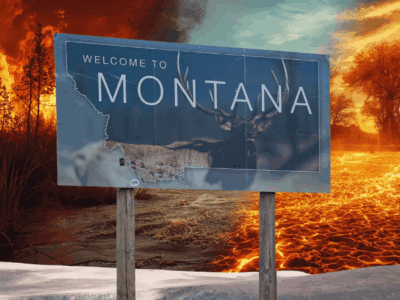Wolf hunts can continue

A federal judge in Montana has refused to halt the hunting of gray wolves in Idaho and Montana, but has strongly suggested that the wolf was unlawfully delisted under the Endangered Species Act.
In April, the US Fish and Wildlife Service removed the gray wolf in Idaho and Montana from the endangered species list. The Service reasoned that the northern Rockies wolf population had grown large enough to ensure viability, and that management plans in Idaho and Montana would provide sufficient protection. The wolf was not delisted in Wyoming, because Wyoming’s plan, which would have allowed essentially uncontrolled killing of wolves outside national park boundaries, was deemed inadequate (after a successful legal challenge).
The Idaho and Montana plans both called for legalized sport hunting, something that is not allowed while a species remains on the ESA list (see Sierra Club v. Clark, 755 F.2d 608 (8th Cir. 1985). Idaho’s hunt began this week. Montana’s begins September 15.
A coalition of environmental groups, led by Defenders of Wildlife, challenged the delisting, and sought an injunction halting the wolf hunt. In a ruling issued this week, US District Judge Donald Molloy gave the states the short-term victory. He denied the motion to enjoin the wolf hunts, ruling that the plaintiffs had not met the standard set by the Supreme Court’s decision last year in Winter v. NRDC for obtaining preliminary injunctive relief. Showing that harm to individual wolves would occur, Judge Molloy wrote, is not sufficient. Plaintiffs had to show the likelihood of irreparable harm to the species as a whole. Although the authorized hunts could result in the death of 330 wolves (more than 20% of the current northern Rockies population) , the Service’s scientists said that the population could withstand even more intense hunting pressure for a year or two.
At the same time, Judge Molloy suggested that the environmental groups would win the larger battle, finding that they had shown a likelihood of success on their claim that delisting the wolves in Idaho and Montana was unlawful. The ESA authorizes listing not only of full species but of subspecies and “distinct population segments” (DPSs) of vertebrate species. The Service has identified the gray wolf in the northern Rockies as a DPS, after considerable gymnastics, some of which I explained here. In his ruling, Judge Molloy found plaintiffs’ argument that the Service cannot selectively delist parts of a DPS persuasive. He opined both that the plain language of the ESA required that outcome, and that even if the statute were ambiguous the fact that the agency had until recently treated DPS’s as indivisible meant its new view did not deserve deference.
When the wolf delisting was announced, I wrote that it might be explained by inertia at the Obama Interior Department, which at the time was lacking key members of its leadership team. Now that team is fully in place, and it includes people with significant experience in ESA politics and law (David Hayes at Deputy Secretary; Michael Bean as counsel to Tom Strickland, Assistant Secretary for Fish, Wildlife, and Parks). This ruling could provide an incentive for the Department not only to reconsider the wolf delisting, but more broadly to develop a coherent approach to treatment of portions of populations. In addition to allowing listing of DPSs, the ESA, calls on the Service to determine whether a listable entity is endangered or threatened “throughout all or a significant portion of its range,” and requires that the agency consider the “the inadequacy of existing regulatory mechanisms,” which frequently vary across state lines, in its listing decisions. Its never been clear how those provisions fit together.
Meanwhile, Idaho’s hunt goes on. According to the New York Times, Idaho has sold more than 14,000 wolf tags to fill a 220-wolf quota. In 10 days, however, only 3 wolves have been legally killed, suggesting even less effect on the wolf population from the states’ hunting programs than the Service or Judge Molloy anticipated. The season runs through December, however, and the chances of success are expected to rise as the snow falls. And of course legal kills are never the whole story for wolves. One concern of environmental organizations is that the anti-wolf sentiment whipped up in the region might lead to a fair amount of illegal hunting, which might be difficult to stop or detect. According to Virginia Morrell at Science Insider (subscription required), there has been one illegal killing so far, a “wolf pup that a hunter shot from behind a pickup truck on a public road . . . The hunter was cited for poaching, and the pup’s hide and skull were seized.”







Reader Comments